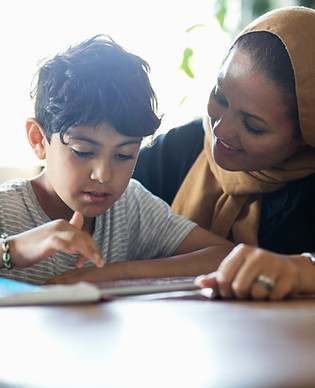
How You Can Support Your Child to Thrive at School
Fostering Belonging, Connection and Confidence Through the Teenage Years
As children move into secondary school, their world gets bigger — new routines, new people, and growing independence. It’s an exciting time, but it can also be challenging. Behind the homework and uniforms, every teenager is trying to answer a powerful question:
"Do I fit in here? Do I belong?"
We know that belonging — feeling accepted, valued, and connected — is one of the biggest predictors of student success. When young people feel that they belong at school, they’re more likely to:
-
Attend regularly
-
Engage with learning
-
Build positive relationships
-
Make good choices
-
Ask for help when they need it

As a parent or carer, you play a key role in shaping that sense of belonging — even if your teenager doesn’t always show it. Here’s how you can help.
Talk in Ways That Keep the Conversation Going
Key message: Teenagers often feel misunderstood — but they still want to be heard.
-
What to try:
-
Use open-ended questions: “What was the best part of today?” or “Was there anything tricky about school today?”
-
Reflect back what you hear: “It sounds like you felt left out in science — is that right?”
-
Avoid jumping in with fixes. Sometimes they just want to be listened to.
-
-
Why it works: Regular, low-pressure conversations show your child that their feelings matter. This builds trust and encourages them to open up when it really counts
Notice the Positives and Name Them
Key message: Positive reinforcement builds confidence and strengthens connection.
-
What to try:
-
Catch them doing something right: “I noticed how you got up on time this week – that’s real maturity.”
-
Praise effort, not just outcomes: “I’m proud of how hard you worked on that project, even if it was tough.”
-
Acknowledge resilience: “It took courage to talk to your teacher about that.”
-
-
Why it works: Teenagers are still forming their identity. Positive feedback from trusted adults reinforces their strengths and helps shape how they see themselves.
Stay Curious, Not Critical
Key message: Teenagers need guidance — but delivered with empathy, not judgment.
-
What to try:
-
Replace “Why did you do that?!” with “Help me understand what was going on.”
-
Instead of “You’re being lazy,” try “It seems like you’re finding it hard to get started — what’s up?”
-
When mistakes happen, say: “This doesn’t change how much I care — let’s talk about how to move forward.”
-
-
Why it works: Criticism can shut teenagers down. Curiosity keeps the door open and models emotional control — even in tough moments.
Show School Matters to You, Too
Key message: When school feels important to you, it becomes more important to them.
-
What to try:
-
Attend school events, even virtual ones — show up when you can.
-
Talk positively about teachers and school staff.
-
Ask specific questions about school life: “How’s form time feeling at the moment?” or “What’s your class like in English this year?”
-
-
Why it works: Your interest signals that school is a shared experience — not something they’re left to navigate alone.

Connect
Connection at the Centre
Staying connected even in times of conflict teaches emotional resilience

Help Them Understand Themselves
Key message: Teenagers are still learning who they are — your guidance helps shape that journey.
-
What to try:
-
Talk about their strengths and values: “You’ve always been great at noticing when someone’s left out.”
-
Help them name their feelings: “Sounds like you’re anxious about the test — that’s completely normal.”
-
Support their independence: “I trust you to handle this, but I’m always here to talk it through.”
-
-
Why it works: Understanding themselves is key to young people feeling confident, connected, and capable of making positive choices.
Keep Connection at the Centre — Even in Conflict
Key message: Disagreements will happen — but they don’t have to damage your relationship.
-
What to try:
-
Use “I” statements rather than blame: “I worry when I don’t hear from you” vs. “You never text me back!”
-
Repair after arguments: “I got frustrated earlier — but I care about you and want us to sort it out.”
-
Be the calm in their storm — even when they’re pushing your buttons.
-
-
Why it works: Conflict is normal in adolescence. Staying connected through it teaches emotional resilience and shows your child they’re still safe and loved.
Model Belonging in Everyday Life
Key message: Your actions teach more than your words.
What to try:
-
Talk about your own connections: “I had a tough day at work, but chatting with my colleague helped.”
-
Show kindness to others — especially in your local community.
-
Let them see you being part of something — a group, a cause, a family tradition.
-
Why it works: Teenagers learn how to “belong” by watching the adults around them. Show them what positive connection looks like.
Final Thought: You Matter More Than You Think
Even when your teenager seems distant or dismissive, your presence, patience and praise make a difference. You don’t have to be perfect — just consistent, caring, and open.
When young people feel connected at home and at school, they are far more likely to make positive choices, grow in confidence, and find their place in the world.

